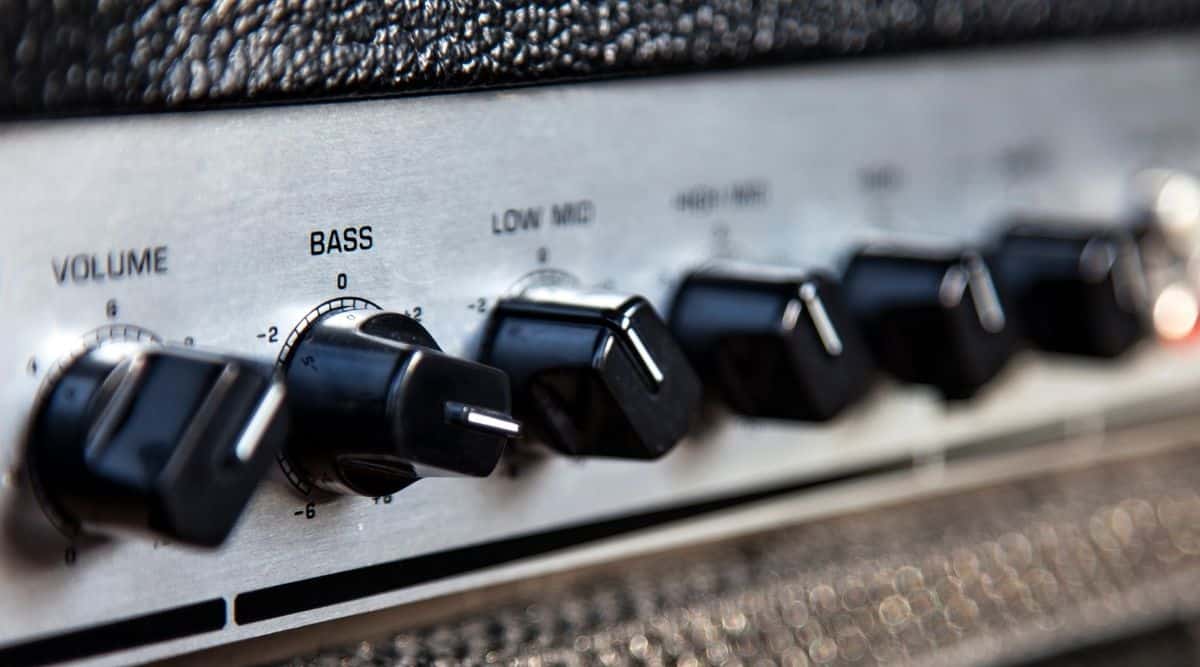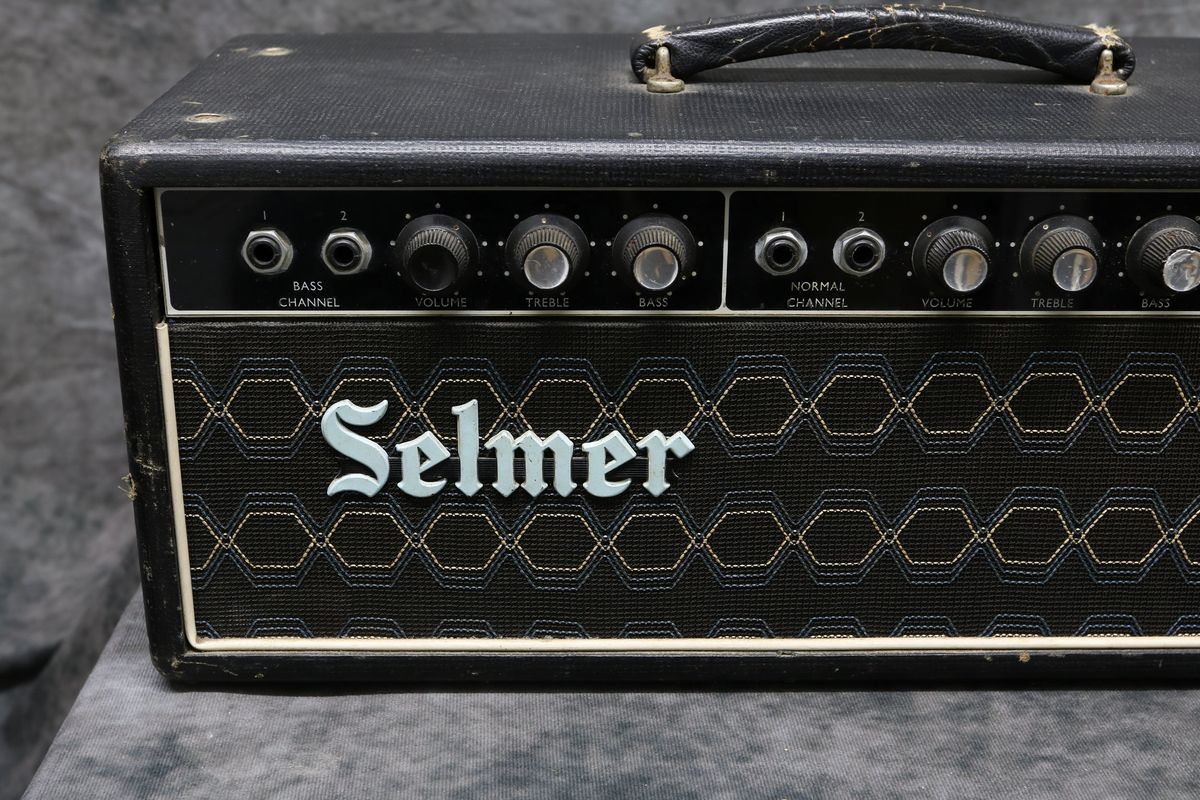Home>Production & Technology>Treble>What Should Treble Be Set At On Soundbar


Treble
What Should Treble Be Set At On Soundbar
Modified: January 22, 2024
Find the perfect treble setting for your soundbar. Learn what treble is and how to set it effectively for the best audio experience.
(Many of the links in this article redirect to a specific reviewed product. Your purchase of these products through affiliate links helps to generate commission for AudioLover.com, at no extra cost. Learn more)
Table of Contents
Introduction
Welcome to the world of audio optimization and the quest for the perfect soundbar setup. When it comes to achieving optimal audio quality, one of the key factors to consider is the treble setting. Treble refers to the higher frequency range of sound, encompassing the crispness and clarity of audio.
Whether you are a casual listener or a devoted audiophile, finding the right treble setting on your soundbar can greatly enhance your audio experience. But with so many options and settings available, it can be perplexing to determine what treble level is best for your soundbar.
Fortunately, in this article, we will delve into the intricacies of treble and provide you with a comprehensive guide on how to set the treble on your soundbar. We will explore the factors to consider, techniques for finding the ideal treble setting, and provide tips and recommendations for adjusting treble to suit your preferences.
So, if you’re ready to take your audio experience to the next level, let’s dive into the world of treble and learn how to optimize it on your soundbar!
Understanding Treble on a Soundbar
Before we dive into setting the treble on your soundbar, it’s important to understand what exactly treble is and how it affects your audio experience. Treble refers to the higher frequency range of sound, typically ranging from around 2,000 to 20,000 Hz. It is responsible for producing the crisp and clear sounds that add depth to your music, movies, and games.
Think of treble as the sparkling top end of the audio spectrum. It brings out the details in vocals, cymbals, and high-frequency instruments, making them sound more vibrant and distinct. Adjusting the treble on your soundbar allows you to fine-tune the balance between the low, mid, and high frequencies and tailor it to your personal listening preferences.
Having a good understanding of treble will help you overcome common misconceptions and make informed decisions when it comes to setting it on your soundbar. It’s important to note that treble is subjective and what sounds good to one person may not sound the same to another. Therefore, it’s all about finding the sweet spot that satisfies your listening preferences.
Another crucial aspect of treble is its relationship with bass. In music, the interaction between treble and bass creates a balanced and immersive audio experience. While treble focuses on high frequencies, bass emphasizes the lower frequencies, adding richness and depth to the audio. Adjusting the treble on your soundbar allows you to strike the perfect harmony between these two elements, ensuring an optimal listening experience.
Now that we have a solid understanding of treble and its significance, let’s move on to the factors you should consider when setting the treble on your soundbar.
Factors to Consider when Setting Treble on a Soundbar
When it comes to setting the treble on your soundbar, there are several factors to take into consideration. These factors will help you fine-tune the treble to your liking and ensure that the audio matches your preferences and the characteristics of your listening environment.
1. Personal Preference: Your personal taste in sound is the most crucial factor when adjusting the treble. Some individuals prefer a more pronounced treble that brings out the subtle details in vocals and instruments, while others prefer a more balanced sound with less emphasis on the high frequencies. Experimentation is key to finding the treble level that suits your preferences.
2. Room Acoustics: The characteristics of your room can significantly impact the sound quality. Hard surfaces, such as tile or hardwood floors, can result in sound reflections and echo, while carpeting and curtains can absorb sound. Adjusting the treble can help compensate for these room acoustics and provide a more pleasing audio experience.
3. Speaker Placement: The placement of your soundbar and its distance from walls, furniture, and other objects can affect the treble. Placing the soundbar too close to a wall or a corner can result in excessive bass and muffled treble. Experiment with different positions and distances to achieve the desired treble response.
4. Audio Content: The type of audio content you enjoy plays a role in adjusting the treble. Different genres of music, movies, and games have their own unique sound signatures. For example, classical music might benefit from a more pronounced treble to bring out the intricacies of the instruments, while action movies might require a balanced treble to enhance dialogue and explosive sounds.
5. Source Quality: The quality of the audio source can impact the treble. High-quality audio files or streaming services with higher bitrates tend to have better treble representation. Lower quality sources, on the other hand, may require adjustments to the treble to compensate for any loss of detail and clarity.
6. Other Soundbar Settings: The treble setting does not exist in isolation. It interacts with other soundbar settings like bass, mid-range, and equalizer presets. Ensure that these settings are balanced and complementary to create an overall audio experience that matches your preferences.
Keep in mind that these factors are interrelated, and adjustments may require some trial and error. Listen to different audio tracks, experiment with treble levels, and make gradual adjustments until you achieve the desired sound quality.
Finding the Ideal Treble Setting for Your Soundbar
Now that we have a good understanding of treble and the factors to consider, let’s explore how to find the ideal treble setting for your soundbar. Keep in mind that finding the perfect treble level is a personal journey, and what sounds good to one person may not be the same for another.
1. Start with a Neutral Setting: Begin by setting your soundbar’s treble to a neutral or default position. This allows you to establish a baseline and make adjustments from there. Keep in mind that different soundbars have varying default settings, so consult your user manual for guidance.
2. Listen to Familiar Audio: Play audio content that you are familiar with, such as your favorite songs or a scene from a movie you’ve seen multiple times. Listening to familiar audio allows you to better discern the impact of treble adjustments on the sound quality.
3. Make Gradual Adjustments: Start making small adjustments to the treble, either increasing or decreasing it by a few increments. Take note of how these adjustments affect the sound. Increase the treble if you want to emphasize the high frequencies or decrease it for a more laid-back sound.
4. Pay Attention to Vocals and Instruments: Focus on vocals and instruments in the audio content you are listening to. Increasing the treble can bring out the clarity in vocals and highlight the nuances of high-frequency instruments like cymbals and strings. However, be cautious not to overemphasize the treble, as it can result in a harsh and fatiguing listening experience.
5. Consider Room Acoustics: Take into account the characteristics of your listening environment. If you’re in a room with lots of hard surfaces and echoes, you may want to decrease the treble to mitigate any excessive brightness. Conversely, if your room is acoustically dead, you might consider increasing the treble to add some sparkle and liveliness to the sound.
6. Take Breaks and Revisit: Don’t rush the process. Take breaks to rest your ears and revisit the treble settings later with a fresh perspective. You may find that what initially sounded good to you may not be the case after taking a break. Trust your ears and make adjustments accordingly.
7. Trust Your Ears: Ultimately, the ideal treble setting is a matter of personal preference. Trust your ears and choose the setting that sounds the most pleasing to you. Don’t be afraid to experiment and try different treble levels until you find the sweet spot that enhances your listening experience.
Remember, there is no right or wrong treble setting. It’s all about creating an audio experience that brings you enjoyment and immerses you in the music or movie you’re listening to. Take your time, be patient, and have fun exploring the treble settings on your soundbar.
Tips and Recommendations for Adjusting Treble on a Soundbar
Adjusting the treble on your soundbar can significantly enhance your audio experience. Here are some tips and recommendations to help you make the most out of your treble adjustments:
1. Start with a Balanced Sound: Before adjusting the treble, ensure that your soundbar’s overall sound is well-balanced. Make sure the bass, mid-range, and other sound settings are adjusted appropriately to create a solid foundation for your treble adjustments.
2. Take Note of Equalizer Presets: Many soundbars offer equalizer presets tailored for different audio genres, such as music, movies, and gaming. These presets can provide a good starting point for your treble adjustments. Experiment with different presets to see which one suits your listening preferences.
3. Use Reference Tracks: Have a set of reference tracks that you know well and use them to fine-tune the treble. These tracks should cover a range of musical genres and have a wide dynamic range to help you assess the treble response accurately.
4. Make Subtle Adjustments: When adjusting the treble, make small and gradual changes. It’s easy to overdo it and end up with an unbalanced or harsh sound if you make drastic adjustments. Take your time to listen and analyze the changes with each adjustment.
5. Consider the Source: The audio source can have a significant impact on the treble. Different sources, such as streaming services, CDs, or vinyl records, may have variations in sound quality and mastering. Keep this in mind and make adjustments accordingly to optimize the treble for the specific source you are listening to.
6. Avoid Treble Fatigue: Be mindful of excessive treble that can lead to listener fatigue. If the treble is too high, it can become harsh and unpleasant to the ears, especially during long listening sessions. Aim to strike a balance that provides clarity and detail without causing discomfort.
7. Consider Room Correction: Some soundbars have room correction features that can help optimize the audio based on the specific acoustics of your room. Explore these options to see if they can assist in improving the treble response in your listening environment.
8. Regularly Test and Reassess: Your preferences may change over time, or you may upgrade your soundbar or audio setup. Regularly test and reassess your treble settings to ensure they still align with your desired sound quality. Don’t be afraid to make adjustments as needed to match your evolving listening preferences.
Remember, adjusting the treble is a personal preference, and there is no one-size-fits-all solution. Experiment, trust your ears, and fine-tune the treble settings to create an audio experience that brings you joy and immersion in your favorite music, movies, and games.
Potential Issues and Troubleshooting Tips
While adjusting the treble on your soundbar can greatly enhance your audio experience, there may be some potential issues that you encounter along the way. Here are some common issues and troubleshooting tips to help you address them:
1. Harsh or Fatiguing Sound: If the treble sounds too sharp or fatiguing, it may be due to an excessively high treble setting. Try reducing the treble level to create a more balanced sound that is easy on the ears.
2. Lack of Clarity or Detail: If you feel that the treble lacks clarity or detail, it may be because the treble setting is too low. Increase the treble level gradually to bring out more definition and intricacy in the high-frequency range.
3. Uneven Treble Response: In some cases, you may notice uneven treble response across different audio tracks or genres. This could be attributed to the mastering of the audio content or individual variations in recording quality. Adjust the treble settings accordingly to find a balance that works well for most of your audio sources.
4. Room Acoustics Interference: Room acoustics can have a significant impact on how the treble is perceived. If you notice that the treble sounds muddy or overly bright in your room, consider incorporating acoustic treatments, such as adding curtains, using acoustic panels, or positioning furniture strategically, to mitigate reflections and improve the overall sound quality.
5. Speaker Placement Challenges: The placement of your soundbar and its proximity to walls or other objects can affect the treble. Experiment with different speaker placements to find the sweet spot that produces the best treble response. Keep in mind that moving the soundbar further away from walls can often help reduce bass resonance and improve treble clarity.
6. Source Compatibility: Some audio sources may have inherent limitations in treble quality due to the way they are recorded or compressed. If you consistently find that certain sources have poor treble performance, it may be worth exploring alternative sources or higher-quality audio formats to improve the treble reproduction.
7. Firmware and Software Updates: Soundbars often receive firmware or software updates that can improve overall performance, including treble response. Check for updates regularly and install them to ensure your soundbar is functioning optimally.
8. Professional Calibration: If you’ve tried different adjustments and troubleshooting steps but still face issues with the treble, you may consider professional calibration. A professional can analyze your room acoustics, speaker placement, and other factors to optimize the treble response and overall audio performance of your soundbar.
Remember, troubleshooting audio issues can require some experimentation and patience. Be open to trying different settings and techniques to find the best treble experience for your soundbar setup.
Conclusion
Setting the treble on your soundbar is an essential step in achieving the perfect audio experience. By understanding the concept of treble, considering various factors, and experimenting with different settings, you can fine-tune the treble to match your preferences and optimize your listening environment.
Remember, treble is subjective, and what may sound great to one person may not be the same for another. It’s important to trust your ears and make adjustments based on your personal preferences and the characteristics of your room. Take the time to explore different treble levels, test with reference tracks, and consider the source quality to find the ideal setting that brings out the best in your audio.
Additionally, be mindful of potential issues that may arise, such as harshness or lack of clarity in the treble. By troubleshooting these issues and making necessary adjustments, you can overcome any challenges and create a well-balanced and immersive audio experience.
Lastly, don’t be afraid to seek professional assistance or explore advanced calibration options if you find it challenging to achieve the desired treble experience on your own. Professionals can provide insights and expertise to optimize your soundbar setup and ensure optimal treble performance.
In conclusion, setting the treble on your soundbar is a journey of personal preference and experimentation. By understanding the fundamentals, considering the factors at play, and fine-tuning the treble based on your preferences, you can unlock the full potential of your soundbar and enjoy a rich and captivating audio experience.











